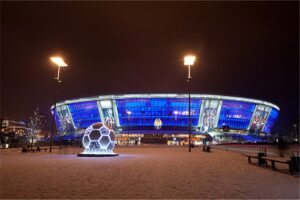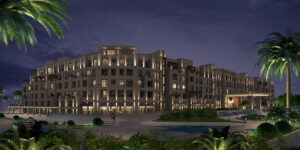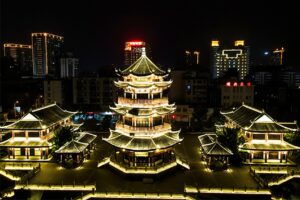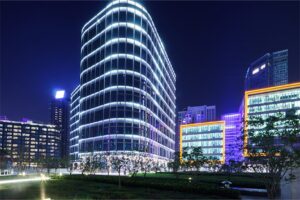When it comes to architectural floodlighting, your choices can significantly impact both the aesthetics of your project and your overall budget. Choosing LED floodlights can offer superior lighting quality, substantial cost savings, and a smaller carbon footprint. So, knowing what to look for and how to evaluate your options is crucial.
What is Architectural Floodlighting?
Architectural floodlighting is a specialized lighting technique primarily used to highlight and enhance the architectural features of buildings, monuments, and landscapes. This technique involves the use of high-intensity floodlights that cast broad-beamed light, illuminating a large area and bringing out the details and structure of the object. The goal here is not just about visibility, but to create an aesthetically appealing nighttime environment that invites appreciation of the architectural brilliance.
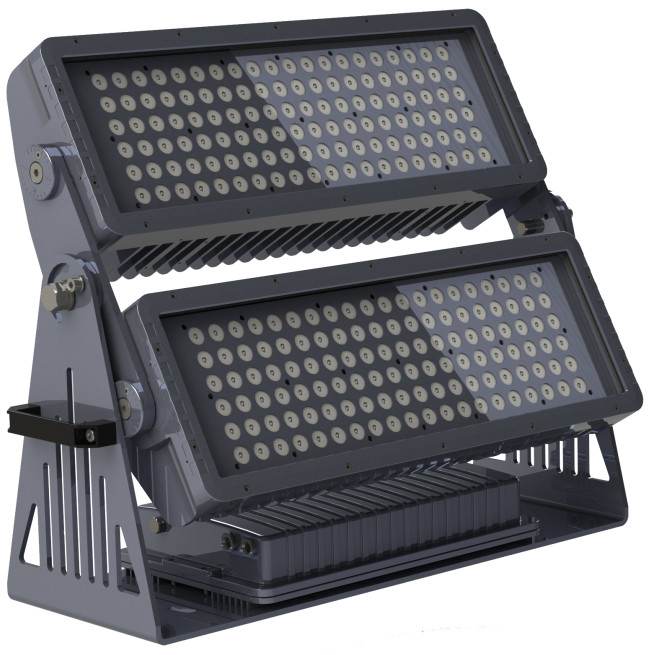
Advantages of Using LEDs in Architectural Floodlighting
LEDs offer several advantages for architectural floodlighting:
- Energy Efficiency: LEDs consume less power compared to traditional lighting options, leading to lower energy costs.
- Long Lifespan: LEDs last significantly longer, reducing the need for frequent replacements.
- Better Light Quality: LEDs offer high-intensity, bright light with excellent color rendering.
- Environmentally Friendly: LEDs are more eco-friendly as they use less energy and do not contain harmful substances like mercury.
- Versatility: LEDs come in various color temperatures and have dimming capabilities, giving you more control over your lighting design.

Techniques for Lighting Up a Building Structure With Architectural Floodlighting
- Up-lighting: Position your lights at the base of the structure pointing upwards to create dramatic shadows and highlight features.
- Down-lighting: Use this to simulate natural light, like moonlight, by positioning lights high up and pointing downwards.
- Grazing: This involves placing the light source close to the surface of the structure to create strong shadows that highlight textures.
- Silhouetting: Position the light behind the structure pointing towards an adjacent wall to create a silhouette effect.
- Cross-lighting: This involves placing lights on opposite sides of the structure to eliminate shadows and evenly illuminate the structure.

Remember, the right technique will depend on the specific building structure and the desired effect. Experiment with different techniques to find the perfect lighting solution
How to Choose Architectural Floodlights?
Choosing the right architectural floodlights can be quite a task. Here are a few pointers that should guide your decision:
- Luminosity: Consider the brightness you need. The size and scale of your structure can guide you here.
- Beam Angle: This refers to the spread of light. Wider beam angles are ideal for lighting up large areas, while narrower beams can highlight specific architectural features.
- Energy Efficiency: Look for lights that offer high luminosity while consuming less power. LED floodlights excel in this aspect.
- Longevity: You don’t want to be constantly replacing lights. Look for options that promise a longer lifespan. Again, LEDs are a winner here.
- Weather Resistance: Your floodlights need to withstand the elements, especially if they’re for outdoor use. Look for weather-resistant ratings.
- Color Temperature: Depending on your project, you might want warm or cool light. LED lights offer a wide range of color temperatures. See the following picture shows different color temperature with different light.

.
What are the key Considerations for Buying Architectural Floodlights
When buying architectural floodlights, always consider:
- Light Quality: Look for options that offer good color rendering and consistency.
- Control Capabilities: Options like dimming, color changing, or beam focusing can give you more control over your lighting effect.
- Ease of Maintenance: Choose lights that are easy to replace and require minimal maintenance.
- Budget: Calculate not just the upfront cost but the long-term operating cost as well. More often than not, spending a bit more initially on energy-efficient options like LEDs can lead to substantial savings down the line.
- Supplier Reputation: Buy from reputed suppliers who offer good after-sales service and warranty.

Switching to LED floodlights for your architectural lighting needs is, therefore, a smart and sustainable choice.
Conclusion
So, understanding what to look for, acknowledging the long-term savings and benefits of LED lights, and making conscious eco-friendly choices can illuminate your path to smart buying decisions. And remember, at solutionproled, we’re not just selling lights, we’re partnering in your success.

